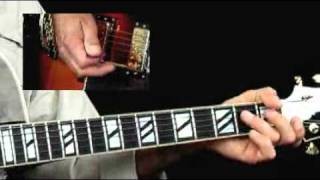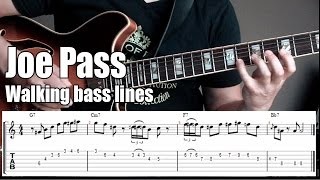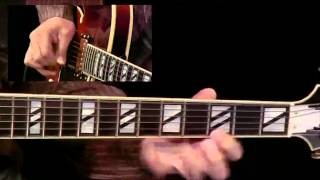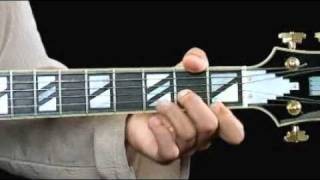ii V I chord progression exercise part 4
Published on 26 January 2016
ii V I chord progression exercise. 2 5 1 round circle of fourths. Lesson on ii V I chord progression and how to improvise on it.
From the Secret Guitar Teacher Site: http://secretguitarteacher.com/youtube/ssb.php?lp_id=987
Video script:
I found the best way to develop the ability to improvise, without all too quickly losing track of were you are in this sequence, is to slip into it gradually.
So we play the exercise we covered in the last sound bite against the backing track pretty much sticking to exactly the same pattern, but beginning to play around with the rhythm a little like this. Not necessarily completing the pattern all the time, but still coming back to the root notes as the chords change to help us keep on track.
To begin with this will take a lot of concentration. You will almost certainly find yourself trying to think about where you are in the sequence. So your mind will be going full pelt something like 'ok...that's the 2 chord... so that's the minor 7th that has a flat 7th at the top end...now we need to find the root note for the 5 chord... ah yes it's the next step up the circle of fifths here ok and that has to be a dominant 7th now how does that go...etc. And so on! Anyone watching you will see steam belching out of your ears as your brain goes into meltdown.
Learning to improvise is largely about relaxing the mind and trusting your fingers and your ears instead. If you have done the basic arpeggio pattern drill for long enough, your fingers will mainly stay on the right track without conscious thought from you. And when you do hit a wrong note, your ears will immediately let you know it ...and the trick is to learn to roll with it...what you play after the so-called wrong note can almost always retrieve the situation and make a wrong note sound like a clever piece of jazz phrasing instead.
So let's get back to the exercise and this time relax the mind and try to trust your fingers and ears. Allow mistakes to happen and develop the knack of recovering them after they occur.
Little by little, wean yourself off the need to continually work from the root notes... try working up one chord and down the next like this. Look for ways to connect the chords anticipate changes ahead of time or catch up with them late.
After a while, the patterns will gradually melt away and you will be left with nothing but sound. Then you can begin to focus all your attention on musical expression and creativity.
Vary the dynamics - playing soft and loud ... Vary the pace by playing faster
and slower. Create texture by using repeats and the odd bit of technique
Losing yourself for hours jamming along like this will help turn you into a natural player - the goal quite literally is to play out of your head!
OK - well it's over to you now! You should find a link to the backing track beneath the video screen. So I'll leave you to have fun with that.
And in the next lesson we'll take this a step further and look at how we might use modes instead of arpeggios to give us a few more notes to play with.
 Bad B's Blues #2 - Jazz Up Your Blues - Jazz Blues...
Bad B's Blues #2 - Jazz Up Your Blues - Jazz Blues...
 Jazzed Blues Guitar Lessons - Mark Stefani - Lick...
Jazzed Blues Guitar Lessons - Mark Stefani - Lick...
 Jazz Fusion II V I Licks - Camilo Velandia
Jazz Fusion II V I Licks - Camilo Velandia
 Joe Pass jazz guitar lesson # 1 | Guitar walking b...
Joe Pass jazz guitar lesson # 1 | Guitar walking b...
 Giant Steps (Ahead) - Fast Bebop 285 BPM - Jazz Gu...
Giant Steps (Ahead) - Fast Bebop 285 BPM - Jazz Gu...
 ii V I Chord Progression Exercise Part 2
ii V I Chord Progression Exercise Part 2
 Modal Improvisation - #3 - Guitar Lesson - Fareed...
Modal Improvisation - #3 - Guitar Lesson - Fareed...
 Jazz Comping - #4 Any Chord Can Be Dominant - Jazz...
Jazz Comping - #4 Any Chord Can Be Dominant - Jazz...
 Melodic Minor Scale & How to Convert C Major Licks...
Melodic Minor Scale & How to Convert C Major Licks...
 50 Jazz Guitar Licks #17 Bebop Chromatic Lick
50 Jazz Guitar Licks #17 Bebop Chromatic Lick







